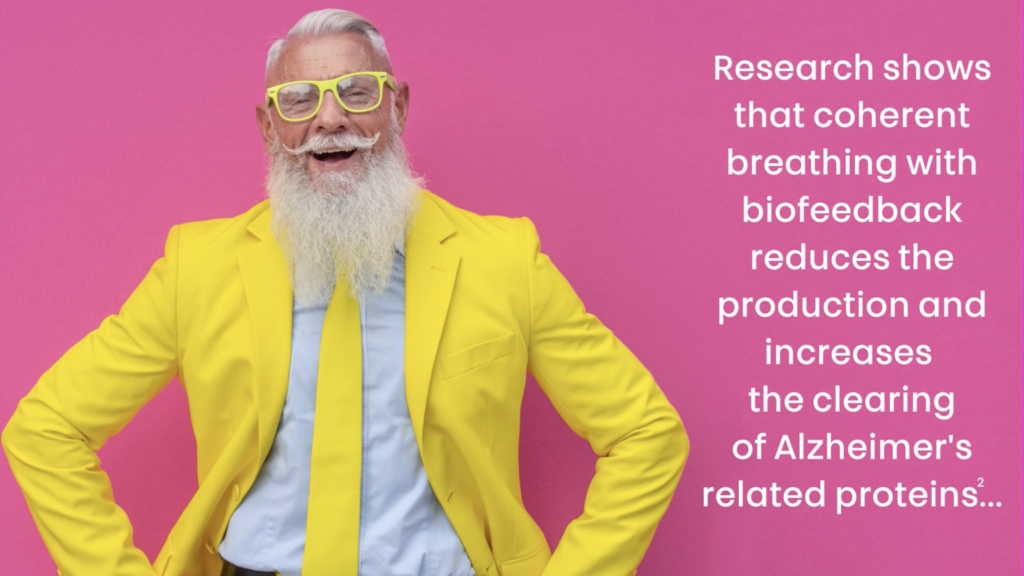
Help protect your brain against premature aging and dementia, including Alzheimer’s disease
HeartMath for Brain Health
HeartMath techniques and biofeedback technologies could help protect your brain against premature aging and dementia, including Alzheimer’s disease.
Dementia cases are rapidly increasing. The World Health Organisation estimates that 78 million people worldwide will have dementia by 2030, rising to over 150 million people by 2050. Currently, Alzheimer’s contributes 60-70% of all dementia cases globally. Alzheimer’s is the 7th largest cause of death globally, and the 2nd largest in high income nations like the UK and USA.
There are no “cures” for dementia or Alzheimer’s, but there are ways we can reduce the risk and potentially slow progression.
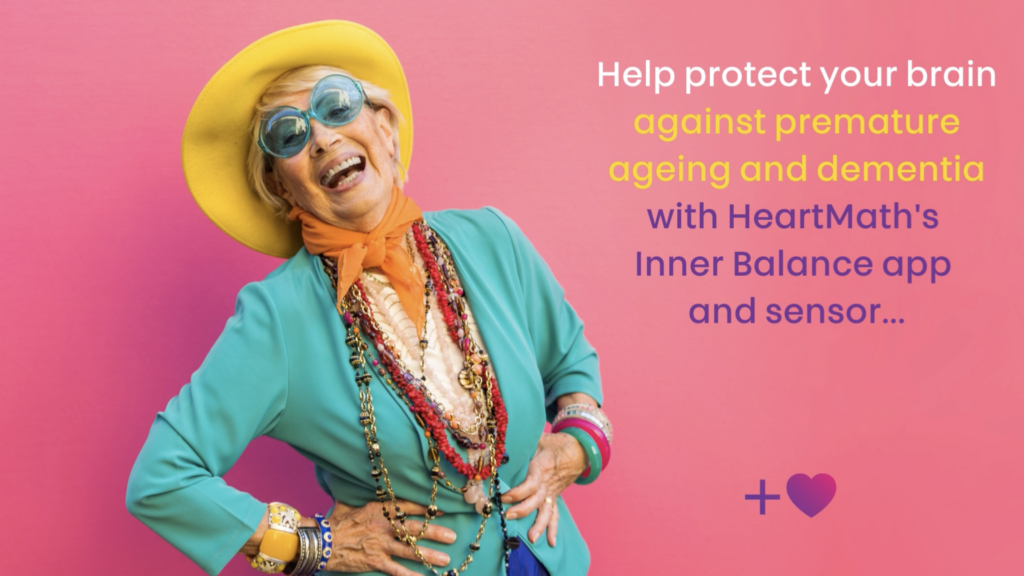
Exciting new research by a team of scientists and academics led by Mara Mather at the University of Southern California, Los Angeles and funded by the US National Institute of Health, reveals how just 4-5 weeks of practicing slow paced/coherence breathing using HeartMath’s HRV biofeedback has measurable benefits on brain health, structure and function and can help protect the brain against premature aging and dementia. So far, the team has published 3 peer-reviewed papers, covering 3 randomized controlled trials, which provide evidence of:
-
Increase in hippocampal volume in older adults.
-
Decrease in production of Alzheimer’s related proteins and increase in the clearance of Alzheimer’s related proteins in both younger and older adults.
-
Increase in cortical volume and coordination and increase in implicit emotion regulation in both younger and older adults.
If these effects had been achieved by a pharmaceutical company, they would doubtless be promoted throughout the world’s media. These effects should be too! And impressively, these changes in brain structure, function and health were achieved through a simple daily practise. And unlike pharmaceutical interventions, there were no adverse side effects. Continue reading below for more details on each of the studies and its findings.
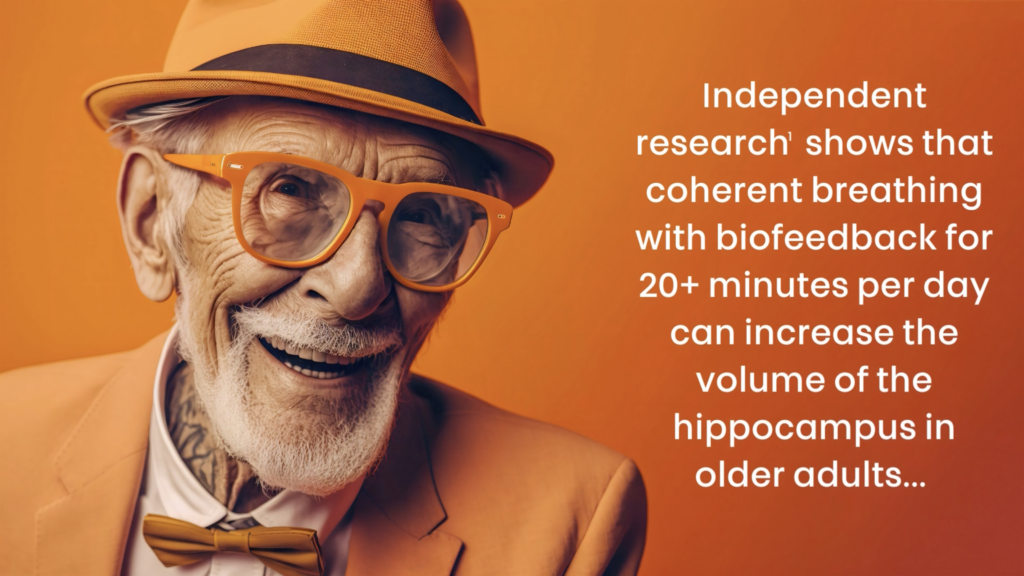
Increase in hippocampal volume in older adults (1)
While dementia is a general term, Alzheimer’s is a specific brain disease. It is marked by symptoms of dementia that gradually get worse over time. Alzheimer’s first affects the part of the brain associated with learning, so early symptoms often include changes in memory, thinking and reasoning skills. Progressive shrinkage of the hippocampus and associated memory loss are hallmarks of Alzheimer’s.
The researchers (Yoo et al, 2023) tested the hypothesis that daily sessions of slow-paced breathing using heart rate variability (HRV) biofeedback to modulate heart rate oscillations could affect the volume of the hippocampal region of older adults’ brains. 162 adults (106 younger adults and 56 older adults) completed five weeks of daily heart rate variability biofeedback practise. Participants were randomly assigned to one of two biofeedback practices: 1) slow-paced or “coherence” breathing (around 10 seconds per breath cycle or 0.10 Hz) while receiving biofeedback with the effect of increasing their heart rate oscillations or 2) using self-selected strategies while receiving biofeedback to decrease their heart rate oscillations. Biofeedback did not significantly affect younger adults’ hippocampal volume, and this is not surprising since younger adults’ brains have not yet begun to shrink. However, among the older adults, the group who engaged in coherence practise to increase their heart rate oscillations showed relatively increased hippocampal volume and those older adults with greater average spectral power of heart rate at around 0.10 Hz during biofeedback sessions showed greater increases in volume across these regions.
What’s the take-away?
Slow paced/coherence breathing with biofeedback increased the volume of the hippocampus in older adults. Shrinkage of the hippocampus is associated with premature aging and is also a hallmark of Alzheimer’s. Increasing the volume of the hippocampus could reduce the risk and/or progression of dementia, including Alzheimer’s.
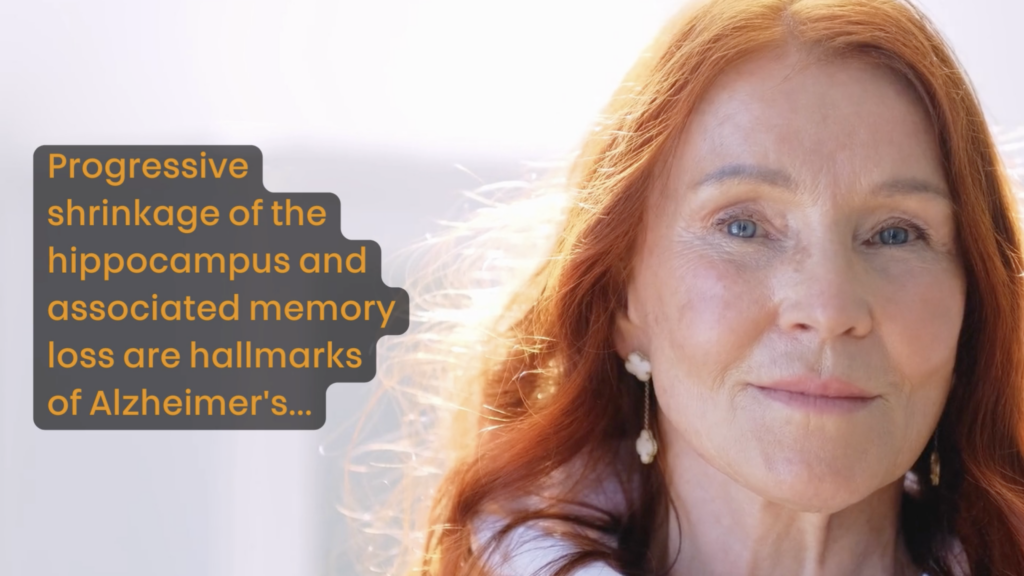
Decrease in production of Alzheimer’s related proteins and increase in the clearance of Alzheimer’s related proteins in both younger and older adults (2)
One driver of Alzheimer’s is an accumulation of toxic proteins in the brain. “Tau tangles” and beta-amyloid plaques are significant accumulations of microscopic brain protein fragments that interfere with a person’s cognition and memory. They are widely recognised hallmarks of Alzheimer’s disease.
In this study, the researchers (Min et al, 2023) examined whether slow paced breathing via HRV biofeedback would stimulate vagus nerve pathways that counter stress and arousal pathways that can influence production and clearance of Alzheimer’s disease related proteins. A randomized group of 108 healthy adults (half younger adults and half older) used either slow-paced/coherence breathing with HRV biofeedback to increase their heart rate oscillations or used a personalised strategy with HRV biofeedback to decrease heart rate oscillations. They practiced between 20–40 mins daily for four weeks.
The group who practiced slow paced/coherence breathing with HRV biofeedback to increase heart rate oscillations decreased the production and increased the clearance of plasma amyloid beta levels and tau levels. This effect was seen for both younger and older adults.
What’s the take-away?
Slow paced/coherence breathing with HRV biofeedback has the potential to both decrease the production and increase the clearance of Alzheimer’s related toxic proteins. High levels of beta amyloid and tau proteins are hallmarks of dementia and Alzheimer’s. Therefore, reducing production and increasing the clearance of these toxic proteins can help protect the brain against premature aging and Alzheimer’s.
Increase in cortical volume and coordination and increased emotion regulation in both younger and older adults (3a,3b)
The brain’s frontal lobes include areas which regulate our thoughts, emotions, and behaviours. Dementia, including Alzheimer’s disease, causes damage to the frontal lobes and this can make it difficult to regulate thoughts, emotions, and behaviours as well as focus, switch between tasks, multitask and feel motivated. Previous studies indicate that the structure and function of two parts of the frontal lobes, the medial prefrontal cortex (PFC) and lateral orbitofrontal cortex (OFC) are associated with heart rate variability (HRV) – the beat-to-beat changes in the heart rate. Typically, this association is assumed to reflect the PFC’s role in controlling HRV and emotion regulation, with better prefrontal structural integrity supporting greater HRV and better emotion regulation. However, as a control system, the PFC must monitor and respond to heart rate oscillatory activity. Thus, engaging in regulatory feedback during heart rate oscillatory activity may over time help shape PFC structure, as relevant circuits and connections are modified.
The researchers (Yoo et al, 2022) created a randomised trial which tested whether 5 weeks of daily sessions of biofeedback to increase heart rate oscillations would affect cortical volume in left OFC and right OFC, two regions particularly associated with HRV in prior studies.
The results showed significant increases in the volume of the left OFC in the group which practised biofeedback to increase heart rate oscillations. These volume changes were also significantly correlated with changes in mood disturbance. In addition, resting low frequency HRV increased more in the group which practised biofeedback to increase heart rate oscillations. These findings indicate that daily biofeedback sessions regulating heart rate oscillatory activity can shape both resting HRV and the brain circuits that help control HRV and regulate emotion.
What’s the take-away?
Better prefrontal coordination supports higher HRV. HRV is associated with the experiencing of more frequent positive emotions and better emotion regulation whereas lower HRV is associated with poorer emotional regulation and self-rated health. It is known that frequent negative thoughts and emotions are associated with cognitive decline and increased levels of the toxic proteins which are hallmarks of Alzheimer’s (see also discussion below) and so reducing negative thoughts and emotions and increasing HRV could reduce risk and progression.
Slow paced breathing with HRV biofeedback can increase prefrontal volume and coordination, HRV and emotion regulation and therefore has the potential to help protect the brain against premature aging and dementia.
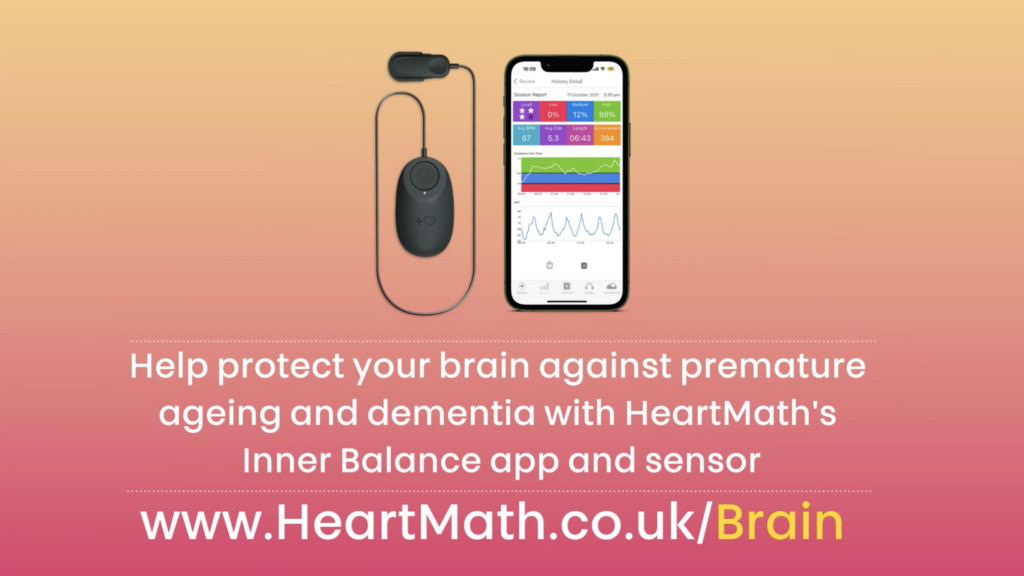
More evidence from other research:
Over the past few years there has been a growing body of research providing evidence of the benefits to older adults of slow-paced/coherence breathwork and of HRV biofeedback. Highlights include:
-
HRV Biofeedback caused improvements in several cognitive processes crucial for everyday functioning, including episodic memory, that are maintained beyond the training period (4).
-
HRV biofeedback reduced depression and anxiety and improved attentional skills. Several participants reported improved sleep quality and stress management (5).
-
Deep slow breathing enhanced the ability of elderly people to process new cognitive tasks and improve cognitive function, highlighting the potential for slow breathing and cognitive training programs as a means of preventing and managing dementia in older adults (6).
-
Deep slow breathing reduced blood pressure and increased peripheral oxygenation in elderly people with hypertension (7). High blood pressure is a risk factor for dementia and previous studies have shown that reducing blood pressure can reduce risk and slow progression.
-
Deep slow breathing reduced anxiety and increased vagal outflow (parasympathetic activity) in older adults. Reducing stress and anxiety and increasing vagal outflow can reduce dementia risk and slow progression (8).
-
A pilot project designed to evaluate a personalized precision medicine approach for Alzheimer’s found significant improvements in biochemical parameters associated with cognitive decline. The pilot project included a variety of interventions, including biofeedback and heart-rate variability training with a HeartMath Inner Balance for IOS device for a minimum of 10 minutes per day (9).
How can HeartMath help?
HeartMath coherence techniques and biofeedback technologies empower you to take control of your brain health and reduce your risk of premature brain aging, dementia, and Alzheimer’s in a simple, enjoyable, non-invasive and medication-free way.
Daily heart coherence practise will also benefit your heart function and your heart-brain connection, positively impacting the brain circuits that control your cognition and emotions.
HeartMath’s Inner Balance HRV biofeedback app and sensor is an effective way to learn and practise coherence and deep slow/paced breathing. The technology enables you to measure and track your HRV coherence. It is also a great way to create a daily habit of practise.
The research described above shows that practising coherence breathing with biofeedback for just 20 minutes or more a day can benefit brain health, structure, and function.
For more information, or to purchase an Inner Balance, visit our webstore.
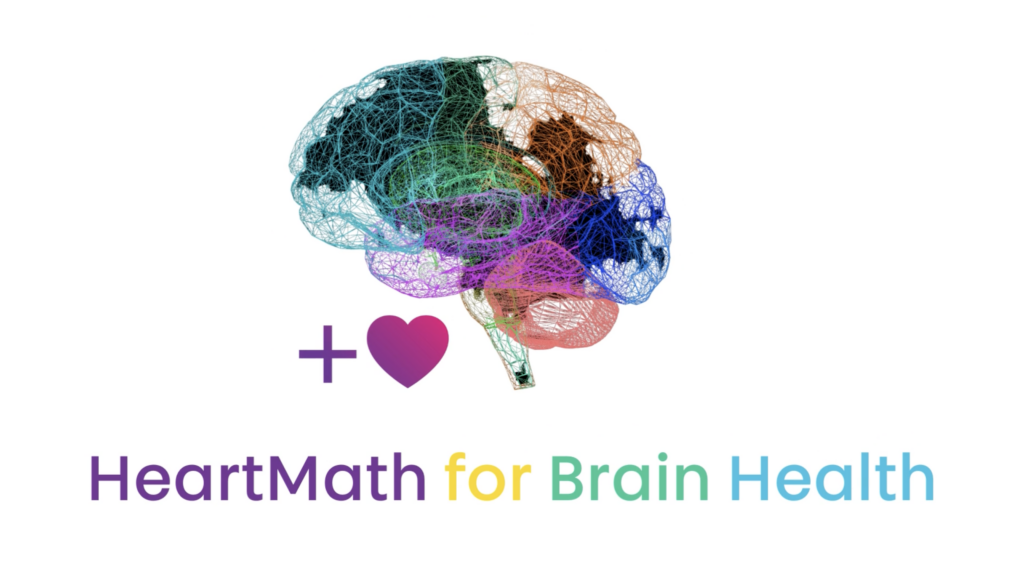
References:
1. Yoo et al (2023). Daily biofeedback to modulate heart rate oscillations affects structural volume in hippocampal subregions targeted by the locus coeruleus in older adults but not younger adults. Preprint. [link]
2. Min et al (2023). Modulating heart rate oscillation affects plasma amyloid beta and tau levels in younger and older adults. Scientific Reports. [link]
3(a). Yoo et al (2022). Heart rate variability (HRV) changes and cortical volume changes in a randomized trial of five weeks of daily HRV biofeedback in younger and older adults. International Journal of Psychophysiology. [link]
3(b). Cho et al (2023). Changes in Medial Prefrontal Cortex Mediate Effects of Heart Rate Variability Biofeedback on Positive Emotional Memory Biases. Applied Psychophysiology and Biofeedback [link]
4. Bögge et al (2022). Respiratory sinus arrhythmia during biofeedback is linked to persistent improvements in attention, short-term memory, and positive self-referential episodic memory. Frontiers in Neuroscience. [link]
5. Jester et al (2019). Heart rate variability biofeedback: implications for cognitive and psychiatric effects in older adults. Aging and Mental Health. [link]
6. Lee et al (2023). The Effect of Deep and Slow Breathing on Retention and Cognitive Function in the Elderly Population. Healthcare. [link]
7. Catela et al (2021). Effect of Slow Diaphragmatic Breathing Technique on Heart Rate, Blood Pressure and Peripheral Oxygen Saturation in Hypertensive Elderly. Open Access Journal of Biomedical Science. [link]
8. Magnnon et al. (2021). Benefits from one session of deep and slow breathing on vagal tone and anxiety in young and older adults. Scientific Reports. [link]
9. Toupes et al (2022). Precision Medicine Approach to Alzheimer’s Disease: Successful Pilot Project. Journal of Alzheimer’s Disease. [link]

